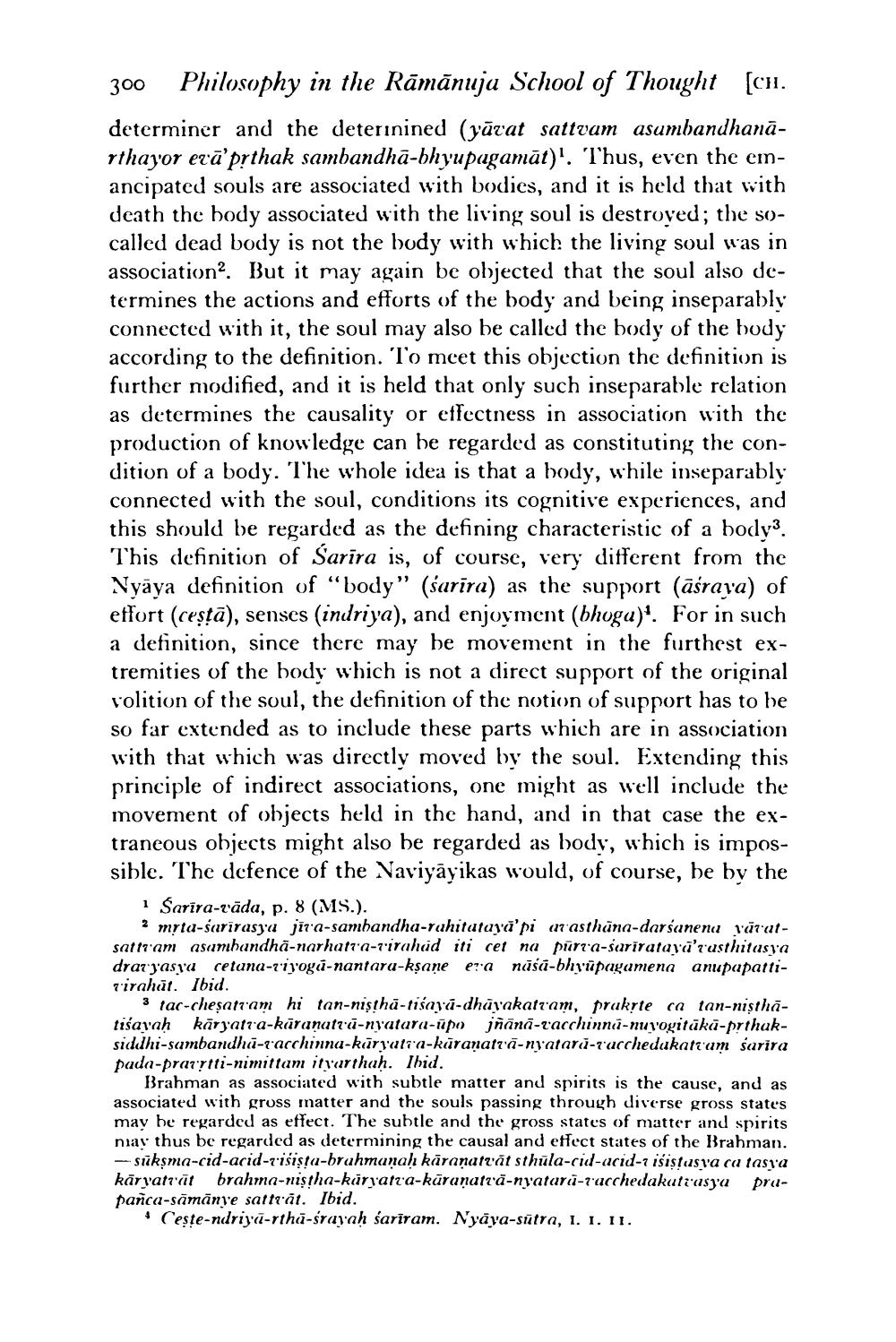________________
300 Philosophy in the Rāmānuja School of Thought [CH. determiner and the deterinined (yārat sattvam asumbandhanārthayor evā'prthak sambandha-bhyupagamāt)'. Thus, even the emancipated souls are associated with bodies, and it is held that with death the body associated with the living soul is destroved; the socalled dead body is not the body with which the living soul was in association?. But it may again be objected that the soul also determines the actions and efforts of the body and being inseparably connected with it, the soul may also be called the body of the body according to the definition. To meet this objection the definition is further modified, and it is held that only such inseparable relation as determines the causality or effectness in association with the production of knowledge can be regarded as constituting the condition of a body. The whole idea is that a body, while inseparably connected with the soul, conditions its cognitive experiences, and this should be regarded as the defining characteristic of a body3. This definition of Sarira is, of course, very different from the Nyāya definition of "body" (śarīra) as the support (āšrava) of etfort (cestā), senses (indriya), and enjoyment (bhoga)" For in such a definition, since there may be movement in the furthest extremities of the body which is not a direct support of the original volition of the soul, the definition of the notion of support has to be so far extended as to include these parts which are in association with that which was directly moved by the soul. Extending this principle of indirect associations, one might as well include the movement of objects held in the hand, and in that case the extraneous objects might also be regarded as body, which is impossible. The dcfence of the Naviyāyikas would, of course, be by the
i Sarira-rāda, p. 8 (MS.).
? mrta-sarirasya jira-sambandha-rahitatava'pi avasthuna-darsanenu vār'utsatta am asambandhă-narhatt'a-z'irahud iti cet na purta-sariratavūrusthitasya drat jasya cetuna-riyoga-nantara-kşane era nāša-bhrūpagamena anupapattivirahat. Ibid.
3 tac-cheşatt'am hi tan-nişthā-tiśayā-dhāyakatram, prakrte ca tan-nisthātišavah karyatta-kuranatzū-nyatara-upo jñānā-tacchinnu-nuvogitākā-prthaksiddhi-sambandhū-racchinna-kūryatra-kāranati'ā-nyataru-zucchedukattam sarira pada-prairtti-nimittam itpurthah. Ihid.
Brahman as associated with subtle matter and spirits is the cause, and as associated with gross matter and the souls passing through diverse gross state's may be regarded as effect. The subtle and the gross states of matter and spirits nay thus be regarded as determining the causal and effect states of the Brahman. - sikşma-cid-acid-risista-brahmanah kāranatvāt sthūla-cid-acid-risistusva ca tasya kāryattat brahma-nistha-küryatta-kūraņatta-nyatarū- 'acchedakutt'asya prupanca-sāmānye satteāt. Ibid.
• Ceste-ndriyā-rtha-srayaḥ sarīram. Nyāya-sutra, 1. 1. 11.




